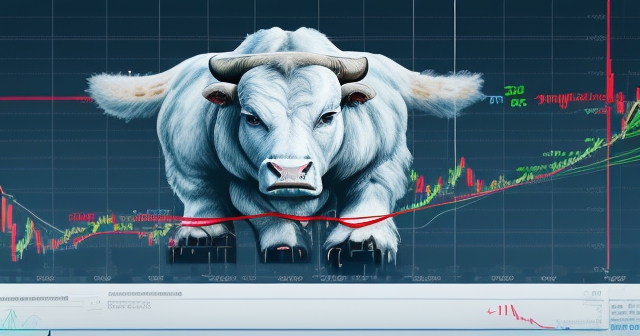Unmasking the Bull Trap: A Trader’s Guide to False Market Reversals
Welcome, fellow explorers of the financial markets. As traders and investors, we constantly seek clarity amidst the noise, attempting to decipher the market’s true intentions. One of the most deceptive patterns we encounter, particularly within a prevailing downtrend, is known as the bull trap. It’s a pattern that has cost countless participants dearly, luring them into seemingly promising upward moves only to reverse swiftly, leaving them trapped in losing long positions.
Understanding the bull trap meaning is not merely an academic exercise; it is a critical skill for preserving capital and enhancing your trading profitability. Think of it like navigating a minefield. You need to identify the false paths – the false signals – that could lead to unexpected losses. In this comprehensive guide, we will dissect the bull trap, exploring its mechanics, identifying its tell-tale warning signs, and equipping you with the strategies to avoid becoming its next victim. We aim to empower you with the knowledge to spot these deceptive reversals and navigate volatile market conditions with greater confidence.
Here are three key reasons why understanding bull traps is essential:
- They can cause significant financial losses for traders who do not recognize the signs.
- Understanding them can improve decision-making in volatile market conditions.
- Awareness of bull traps helps traders optimize their entry and exit strategies.
What Exactly Constitutes a Bull Trap? Defining the Deception
At its core, a bull trap is a false signal that suggests a declining security‘s price has found a bottom and is beginning a new upward trend. It typically occurs within an established or developing downtrend. Imagine a ball bouncing down a set of stairs – it might bounce up a step or two, but the overall direction is still down. A bull trap is like one of those temporary, convincing bounces that fools you into thinking the ball is suddenly going to roll back up the entire staircase.
Specifically, a bull trap materializes when a stock, index, commodity, or cryptocurrency price attempts a rally after a period of decline. This rally might look strong; it might even break above a significant resistance level or trendline, convincing buyers that the trend has genuinely reversed. However, the buying pressure quickly evaporates, and the price reverses course sharply, often falling below the original breakout level and continuing its previous downward trajectory. Traders who bought during the rally are left holding positions that are rapidly losing value, hence the term “trap“.
This pattern is also sometimes referred to as a “dead cat bounce“, which is a morbid but perhaps accurate description of a brief, unconvincing recovery in a declining asset. Another related term is “whipsaw“, describing the action of the price moving sharply in one direction (up, in this case), only to reverse and move just as sharply in the opposite direction (down), catching traders out on both ends.
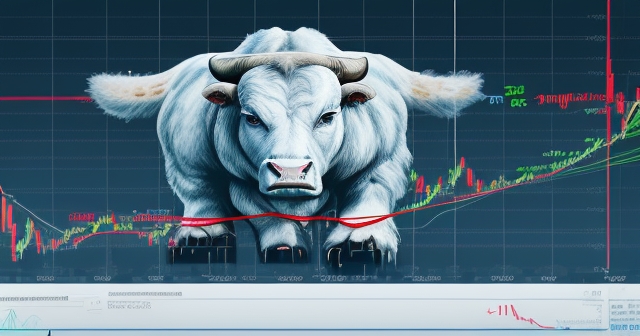
| Type of Trap | Description | Key Indicators |
|---|---|---|
| Bull Trap | Occurs in a downtrend; price falsely moves up. | Low buying volume on rally, failure at resistance. |
| Bear Trap | Occurs in an uptrend; price falsely moves down. | Low selling volume on dip, failure at support. |
The Mechanics Behind the Misdirection: Why Bull Traps Occur
Understanding why bull traps happen is crucial for identifying them. They aren’t random market anomalies; they are the result of specific dynamics related to supply, demand, and market psychology. Let’s explore some of the primary culprits:
Lack of Sustained Buying Volume: A genuine trend reversal, especially one that overcomes an established downtrend, requires significant and sustained buying pressure. Often, in a bull trap, the initial rally occurs on relatively low or dwindling volume. This suggests a lack of conviction behind the move. It might be driven by short covering, algorithmic trading, or a small group of eager buyers, rather than broad market participation. When the supply of sellers who were waiting for a better price to exit outweighs the demand from these limited buyers, the rally stalls and reverses.
False Breakouts: A common scenario for a bull trap is a false breakout above a key resistance level, downtrend line, or chart pattern. Traders are taught that breaking resistance is a bullish signal, prompting buy orders. However, if this breakout isn’t supported by strong fundamental reasons or confirming technical indicators (like increasing volume and momentum), it can easily fail. The price pushes slightly above resistance, fails to attract follow-through buying, and then collapses back below the level, validating it as resistance rather than turning it into support.
Psychological Factors: The human element plays a massive role in bull traps. Fear of Missing Out (FOMO) is a powerful driver. As a stock or security starts to rally after a fall, traders who have been watching it decline might fear they are missing the bottom. This can lead to impulsive buying without proper analysis. Herd mentality also contributes; seeing others buy can trigger buying pressure, even if the underlying conviction is weak. Confirmation bias leads traders to focus only on the bullish signals while ignoring warning signs like low volume or surrounding downtrend structure. Overconfidence after a recent win can also make traders less cautious about potential traps.
Manipulation by Large Players: While controversial and difficult to definitively prove in every instance, the actions of large institutional investors, market makers, or high-frequency trading (HFT) firms can sometimes contribute to bull traps. These players might strategically push the price up temporarily to trigger buy orders from smaller participants (creating liquidity) or to allow themselves to sell large positions at a slightly better price before allowing the decline to continue. This is why understanding order flow and large participant behavior can offer valuable insights, though these are often opaque.

Fundamental Catalysts Failing: Sometimes, a temporary rally is sparked by news or data (like an earnings report, economic data, or geopolitical event). If the initial positive reaction isn’t sustained by continued positive news or market sentiment, the rally can quickly fizzle out and reverse, forming a bull trap.
Spotting the Snare: Key Warning Signs of a Bull Trap
The good news is that bull traps often leave footprints. By paying attention to specific technical and contextual clues, you can significantly increase your chances of identifying a potential trap before you fall into it. Here are some of the most important warning signs to watch for:
Low Volume on the Rally/Breakout: This is perhaps the most classic warning sign. A genuine trend reversal should ideally be accompanied by expanding buying volume, indicating increasing participation and conviction from buyers. If the price is rising, or breaking above resistance, on volume that is lower than the preceding decline, it suggests the move lacks power. It’s like trying to push a heavy car uphill with minimal effort – it might move a little, but it won’t go far.
Failure to Make a Higher High or Sustain Higher Lows: A fundamental characteristic of an uptrend is a series of higher highs and higher lows. In a downtrend, the opposite is true. A potential bull trap often occurs when the rally fails to break above the most recent significant swing high within the downtrend. Even if it does break, it quickly fails to sustain a new higher low before reversing. The overall structure of the downtrend remains intact despite the temporary upward blip.
| Warning Sign | Importance | Indicators |
|---|---|---|
| Low Volume on Rally | Signifies lack of buying conviction. | Volume lower than previous declines. |
| Failure to Maintain Structure | Indicates potential weakness in the trend. | Failure to break recent highs or maintain lows. |
Technical Indicator Divergence: Momentum indicators like the Relative Strength Index (RSI) can provide crucial clues. Bearish divergence occurs when the price makes a higher high (or double top), but the indicator makes a lower high. In the context of a potential bull trap during a downtrend, you might see the price rally towards or slightly above a previous high, while the RSI indicator fails to reach its previous peak from the rally attempt. This suggests weakening momentum behind the price move, even as price itself moves up.
Re-testing and Failing at Resistance: A false breakout is essentially a failed test of a resistance level. The price may poke its head above the resistance line but quickly retreats back below it. Multiple attempts to breach resistance that result in swift reversals are strong indications that sellers are actively defending that level, increasing the likelihood of a bull trap.
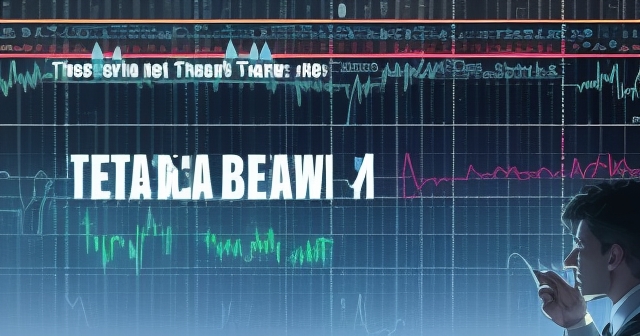
Bearish Candlestick Patterns After the Rally: As the rally stalls, look for bearish candlestick patterns forming near key resistance levels or after the false breakout. Patterns like Doji Stars, Engulfing patterns, or Pin Bars with long upper wicks (selling pressure) signal that buyers are losing control and sellers are stepping in. A large bearish candlestick that engulfs the prior few bullish candles is a particularly strong warning sign.
Psychological Warfare: Why We Are Susceptible to the Trap
Beyond the technical signals, it’s vital to acknowledge the psychological factors that make traders vulnerable to bull traps. The market is not just charts and numbers; it’s a collective reflection of human emotions and biases. When emotions run high, rational decision-making is compromised.
Consider the feeling of watching a stock you know has been declining suddenly turn up sharply. Your brain might start shouting, “It’s the bottom! Buy now before it’s too late!” This is pure FOMO. You feel the pressure to act quickly, abandoning your usual analysis process. The herd mentality exacerbates this; if you see chatter online or hear friends talking about the “rally“, the urge to join in becomes almost overwhelming, even if you have doubts.
Then there’s confirmation bias. Once you’ve decided (or emotionally committed) to the idea that this is a real reversal, you will unconsciously seek out information that supports that belief while filtering out contradictory signals. You might focus on the bullish candle forming and ignore the low volume or the surrounding downtrend structure. Overconfidence, perhaps stemming from a recent successful trade, can also lead you to dismiss the possibility of a trap, making you less diligent in seeking confirmation.
Recognizing these inherent psychological biases is the first step to combating them. It requires discipline and a commitment to sticking to your trading plan, regardless of the emotional pull of the moment. Remember, the market doesn’t care about your feelings or your desire to catch the exact bottom.
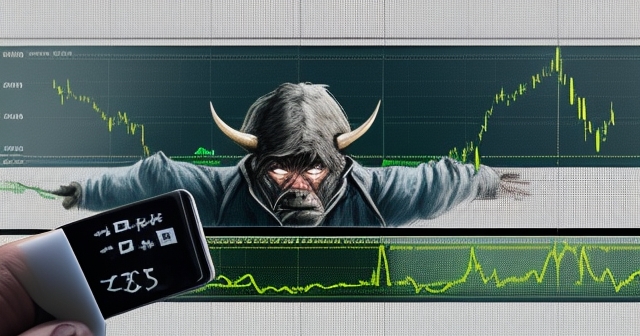
Beyond Basics: Causes and Market Dynamics of Traps
Let’s delve a bit deeper into the underlying market dynamics that contribute to the formation and severity of bull traps. While a lack of volume and false breakouts are common catalysts, the interaction of different market participants plays a significant role.
The initial rally that forms the trap can sometimes be fueled not just by new buyers, but by short sellers covering their positions. In a strong downtrend, many traders will be short the asset. A small upward movement or a piece of positive news can trigger some of these short sellers to buy back shares to lock in profits or limit potential losses. This short covering adds buying pressure, creating the appearance of a strong rally. However, this buying is finite. Once the short covering subsides, and if there isn’t sufficient new organic buying demand, the rally collapses.
Furthermore, the swift downturn that follows a bull trap is often accelerated by the forced selling of those who were trapped in long positions. As the price falls back below their entry point or a key support level, many traders’ stop-loss orders are triggered, automatically selling their positions. This wave of selling adds significant downward pressure, fueling the price decline and potentially trapping even more participants who might have bought lower down during the brief rally.
This dynamic highlights how bull traps can be self-reinforcing downward spirals. The initial false signal leads to misplaced long entries, which then become forced exits that perpetuate the downtrend. It’s a classic example of how order flow and market structure interact to create significant moves.
Navigating the Minefield: Strategies to Avoid Bull Traps
Avoiding bull traps requires a combination of careful analysis, patience, and stringent risk management. Here are actionable strategies you can implement:
Always Wait for Confirmation: This is arguably the most important rule. Don’t jump into a trade the moment a price breaks a resistance level or a rally begins. Wait for confirmation that the move is legitimate. What constitutes confirmation? Look for:
- Sustained price action above the broken resistance level. Does the price hold above it for a significant period (e.g., hours on an intraday chart, a day on a daily chart)?
- Increasing and sustained volume accompanying the breakout and subsequent move. Is the buying volume notably higher than the average volume or the selling volume during the prior decline?
- Follow-through buying on subsequent periods (e.g., the next hour or day). Do buyers continue to push the price higher after the initial surge?
- Confirmation from other indicators or technical analysis methods (e.g., a bullish crossover on moving averages, confirmation of momentum on the RSI without bearish divergence).
Waiting for confirmation means you might miss the very bottom or the absolute start of a real rally, but it drastically reduces your risk of entering a false breakout.
Scrutinize Volume: As highlighted earlier, volume is your best friend in identifying potential traps. If a price is surging but volume is low or declining compared to previous periods, be extremely cautious. Conversely, if a breakout occurs on exceptionally high volume, it increases the probability that the move is genuine.
Utilize Stop-Loss Orders: This is non-negotiable. Always use a stop-loss order on every trade, especially when buying into a potential reversal in a downtrend. Place your stop-loss strategically below the breakout level or a key support level that, if broken, would invalidate your bullish premise. A tight stop-loss limits your potential losses if the rally proves to be a bull trap and the price reverses sharply. Consider using a trailing stop order as the price moves up to protect profits, but be mindful of volatility that could trigger it prematurely.
Understand the Prevailing Trend: Always trade with the larger trend unless you have very strong evidence of a reversal. Bull traps occur *within* downtrends. It is inherently riskier to take long positions against the dominant trend. If you are trading in a clear bear market, be extra vigilant about any upward rallies; many of them are likely to be traps.
Look Left on the Chart: Identify key historical resistance levels. Has the price struggled to break above a certain level previously? If the current rally is approaching one of these levels, the probability of a reversal or trap increases significantly. These are areas where prior sellers established positions and are likely to defend the level again.
Consider the Broader Market Context: Is the overall market in a downtrend? Are there significant economic or fundamental headwinds? A rally in an individual security is more likely to be a bull trap if it is occurring against a backdrop of general market weakness or negative news.
Trading, particularly navigating treacherous patterns like the bull trap, requires robust tools and efficient execution. If you’re active in global markets, perhaps exploring Forex or CFD trading, the platform you choose is crucial. In this context, considering a platform like Moneta Markets, an Australian broker with over 1000 financial instruments, could be beneficial for both beginners and experienced traders alike.
Trading Around Bull Traps: Opportunities for the Prepared Trader
While bull traps are dangerous pitfalls for those caught on the wrong side, they can actually present opportunities for experienced traders who are able to identify them early. Recognizing a probable bull trap allows for several potential trading strategies:
Entering Short Positions: If you identify the warning signs of a bull trap as the price rallies (e.g., low volume, bearish divergence, failure at resistance), this can be an excellent opportunity to enter a short position. You are essentially trading with the expected continuation of the prevailing downtrend. Your entry might be as the price falls back below the false breakout level or after a bearish candlestick pattern confirms the reversal. Place your stop-loss above the high of the false rally.
Adding to Existing Short Positions: If you were already short the security from higher prices, a bull trap provides a potential opportunity to add to your short position at a better price before the downtrend is expected to resume. This requires confidence in your initial analysis and the identification of the trap.
Patient Accumulation (for Long-Term Investors): For long-term investors with a conviction in the fundamental value of a security despite a downtrend, a bull trap and the subsequent price decline can present an opportunity to buy shares at even lower prices. They understand that the trap is a short-term phenomenon and are not phased by the temporary losses incurred by short-term traders. However, this strategy requires a deep understanding of the company’s fundamentals and a long investment horizon.
Trading against the grain, especially in situations like bull traps, demands platforms that are not only reliable but also offer advanced trading tools and competitive conditions. When considering where to execute such strategies, especially in markets like Forex or with CFDs, the technological edge and execution speed a broker provides can make a difference. Moneta Markets, offering support for popular platforms like MT4, MT5, and Pro Trader, coupled with features like low spreads and high-speed execution, is engineered to support diverse trading approaches.
Bull Traps Across Markets: Not Just for Stocks
It’s important to recognise that bull traps are not exclusive to the stock market. They are prevalent across virtually all financial markets where technical analysis is used. You can encounter them in:
Indices: Major market indices like the S&P 500, Nasdaq 100, or FTSE 100 can exhibit bull trap patterns, especially during broader market corrections or bear markets.
Cryptocurrencies: The highly volatile nature of the cryptocurrency market makes it a fertile ground for bull traps. The rapid price swings and high level of retail participation susceptible to FOMO can lead to dramatic false rallies in tokens like Bitcoin or various altcoins during downtrends.
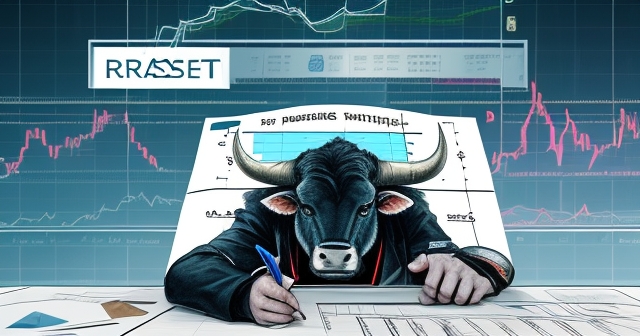
Forex: Currency pairs in the Forex market (GBP/USD, EUR/USD, etc.) can also display bull trap characteristics, often around key resistance levels or following economic news releases that cause temporary volatility.
Commodities: Assets like Gold futures, oil, or other commodities can also show bull traps within their respective downtrends, influenced by supply/demand dynamics and market sentiment.
The universality of the bull trap pattern underscores the importance of learning to identify it, regardless of which market you trade. The underlying principles – lack of conviction volume, false breakouts, and psychology – remain consistent.
Comparing Traps: Bull vs. Bear
Understanding bull traps is often made clearer by contrasting them with their mirror image: bear traps.
A bear trap occurs in an established uptrend (or during a rally within a broader trend). It is a false signal where the price of a security declines convincingly, potentially breaking below a support level or trendline, leading traders to believe the trend is reversing downwards or accelerating. However, the selling pressure quickly dries up, and the price reverses sharply back upwards, continuing its prior upward trend. Traders who entered short positions or sold long positions during the apparent dip are “trapped” and face losses as the price rises.
Here’s a simple comparison:
- Bull Trap: Occurs in a downtrend, price moves up falsely, traps buyers (long positions), followed by a sharp downward reversal. Key warning signs include low buying volume on the rally, failure at resistance.
- Bear Trap: Occurs in an uptrend, price moves down falsely, traps sellers (short positions), followed by a sharp upward reversal. Key warning signs include low selling volume on the dip, failure at support.
Both traps are forms of whipsaw and highlight the danger of acting on initial price moves without confirmation, especially when those moves go against the prevailing larger trend.
For traders operating across different instruments and seeking comprehensive market access, finding a broker with strong regulatory backing and a wide array of offerings is essential. Moneta Markets stands out in this regard, holding multiple regulatory licenses including FSCA, ASIC, and FSA. This multi-jurisdictional regulation, combined with features like segregated client funds and 24/7 multilingual support (including Chinese), provides a layer of trust and operational support crucial for confident global trading.
Advanced Considerations and Indicators
For more experienced traders looking to deepen their analysis, there are additional tools and concepts that can aid in identifying potential bull traps.
Order Flow and Delta Analysis: Platforms that offer insights into order flow, such as a Footprint chart or Delta indicator, can reveal whether buying pressure during a rally is genuine or simply momentum-driven. If the price is moving up rapidly, but the aggregate Delta (which measures the difference between trades executed at the offer vs. the bid price) is not showing significant positive values, it could indicate that the move is lacking aggressive buy orders and might be a trap. Conversely, large negative delta in a rally is a strong warning sign.
Market Structure and Liquidity: Understanding where large pools of liquidity (clusters of stop-loss orders or pending limit orders) reside can provide clues. Major players may intentionally trigger a false breakout above a resistance level precisely because they know there are many stop-loss orders from previous short positions placed just above that level. Triggering these stops creates temporary buying pressure (liquidity) which they can then use to sell their own large positions into. Observing these dynamics requires specialized tools and a deeper understanding of market microstructure.
Combining Technical and Fundamental Analysis: While bull traps are primarily technical patterns, considering the fundamental backdrop is also important. Is there a logical fundamental reason for the rally? Or is it occurring in the absence of positive news, making it more susceptible to being a temporary blip? A rally based purely on technical momentum without fundamental support is inherently riskier.
Remember, no single indicator or technique is foolproof. The most effective approach is to use a combination of these tools and perspectives to build a strong case for or against the validity of a rally in a downtrend.
Building Resilience: Mental Fortitude Against Traps
Beyond technical skills, developing the right mindset is paramount to avoiding and managing bull traps. The market can be a harsh teacher, but the losses incurred from a trap often stem as much from emotional decisions as from technical misreading.
Cultivate patience. Avoid the urge to “catch the bottom.” Real reversals unfold over time and typically show confirming characteristics. Impatience often leads to buying into tentative rallies that turn out to be traps.
Practice discipline. Stick to your trading plan. If your plan requires specific confirmation signals before entering a long position in a downtrend, do not deviate just because a rally looks strong superficially. Your plan is your defense mechanism against emotional impulses like FOMO.
Embrace a bidirectional mindset. The market moves up and down. Do not become fixated on only taking long positions. Being open to shorting opportunities, especially when identifying potential bull traps, gives you flexibility and allows you to potentially profit from the subsequent downturn.
Treat every rally within a strong downtrend with suspicion until proven otherwise. This skeptical approach can help you remain objective and focus on the warning signs rather than getting swept up in the hype.
Finally, view losses from being caught in a trap as learning experiences. Analyze what signals you missed or misinterpreted. Use this knowledge to refine your strategy and improve your ability to spot traps in the future. Resilience in trading comes from learning from mistakes and continuously improving your process.
Conclusion: Arming Yourself Against Deception
Bull traps are a persistent and dangerous feature of financial markets, capable of inflicting significant losses on unsuspecting traders. They represent false signals of reversal within established downtrends, luring buyers into premature long positions before the price collapses again.
By understanding the underlying mechanics – the critical role of insufficient volume, the frequency of false breakouts, the power of market psychology (especially FOMO and herd mentality), and even potential large-player actions – you begin to see the trap for what it is.
Crucially, you are now equipped with the knowledge of key warning signs: the tell-tale lack of confirming volume during the rally, the failure to make higher highs or maintain structure, the presence of bearish divergence in momentum indicators like the RSI, and bearish candlestick patterns forming at resistance levels. These are the breadcrumbs that help you navigate away from the trap.
We’ve also explored powerful strategies for defense: the paramount importance of waiting for confirmation before entering a trade, the non-negotiable use of stop-loss orders to limit losses, the value of scrutinizing volume closely, and the necessity of respecting the prevailing larger trend. For those who hone their skills, identifying a likely bull trap can even become an opportunity to initiate or add to short positions.
Trading is a journey of continuous learning and adaptation. Bull traps will continue to occur, but by developing a sharp eye for their characteristics, exercising discipline in your trade entries and risk management, and maintaining a robust mental approach, you significantly reduce your vulnerability. You move from being a potential victim of deception to a prepared and discerning market participant, better equipped to protect your capital and pursue profitable opportunities, regardless of the market’s attempts to mislead.
bull trap meaningFAQ
Q:What is a bull trap in trading?
A:A bull trap occurs when a price rise within a downtrend misleads traders into believing an upward reversal is occurring, only for the price to fall sharply afterward.
Q:How can I identify a bull trap?
A:Look for signs such as low trading volume on rallies, failure to sustain higher price levels, and bearish candlestick patterns after initial price increases.
Q:What strategies help avoid falling into bull traps?
A:Use confirmation signals before entering trades, maintain strict stop-loss orders, and analyze the prevailing market trend and volume dynamics.
